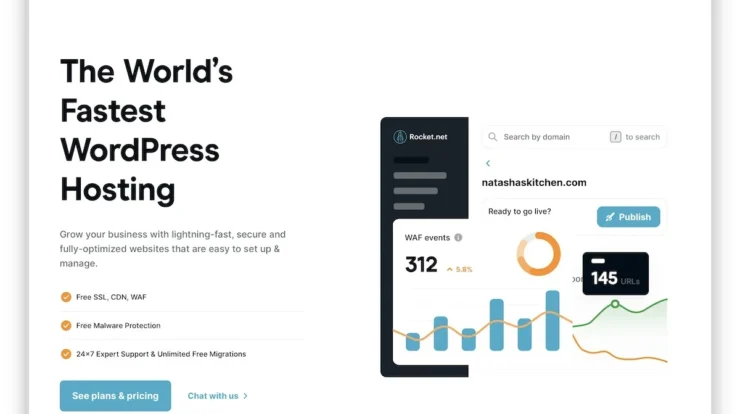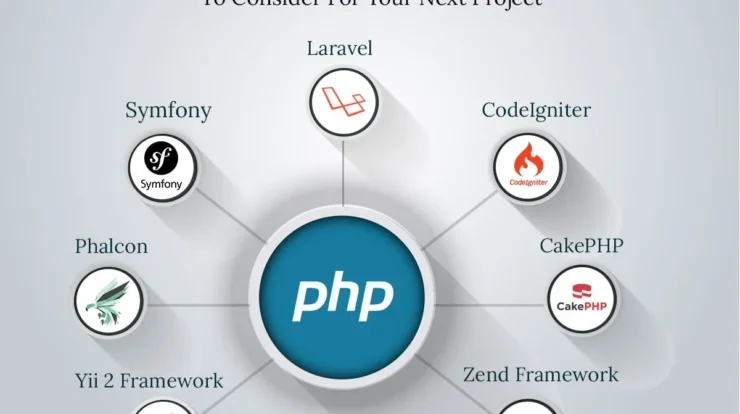
Modern applications rely heavily on APIs to connect diverse services and deliver seamless user experiences, and high-speed performance is crucial for these connections.
A robust API infrastructure is essential for businesses looking to remain competitive in today’s fast-paced digital landscape, fostering rapid responses, improved scalability, and enhanced user satisfaction.
Choosing the right hosting solution directly impacts the speed and reliability of these critical API transactions.
This article delves into the intricacies of selecting the ideal hosting for high-speed APIs, illuminating the factors that influence optimal performance.
The speed of an application’s API directly correlates to user engagement and satisfaction. Slow response times can lead to frustrated users and decreased conversions.
Optimizing API response times is critical for maintaining user engagement and fostering a positive user experience. Rapidly accessing data and services through a well-designed and hosted API is key to maintaining a competitive advantage.
A variety of hosting providers cater to diverse API needs, each boasting unique characteristics regarding server configurations, network infrastructure, and scalability. Understanding these capabilities is paramount to selecting a hosting provider that aligns with specific API performance requirements.
This exploration of the best hosting for high speed api will evaluate critical elements like network latency, server responsiveness, and load balancing, offering a comprehensive analysis to assist developers and businesses in optimizing their API environments.
Choosing the Right Infrastructure for High-Performance APIs
A critical aspect of selecting the best hosting for high-speed APIs lies in understanding the necessity of a scalable and responsive infrastructure.
High-performance hosting solutions are crucial for ensuring that APIs deliver rapid responses to requests, underpinning a positive user experience.
The optimal hosting platform for high-speed APIs must support substantial concurrent connections, accommodate rapid data transfer rates, and handle fluctuating traffic loads gracefully.
Robust servers, equipped with the necessary processing power and memory, are essential for handling the demands of high-volume API requests.
Furthermore, an effective network infrastructure is paramount to minimize latency and maximize transfer speed. This can include specialized network hardware and optimized routing strategies.
Optimized API performance hinges significantly on the capacity of the hosting solution to deliver consistent and rapid response times, a key aspect of maintaining high standards of user engagement. Reliable network connectivity and efficient server configuration are indispensable for ensuring API responsiveness.
Choosing the best hosting for high-speed APIs requires careful consideration of factors such as server location, the quality of the underlying infrastructure, and potential bottlenecks that might hamper performance.
The best hosting solutions for high-speed APIs commonly incorporate advanced caching mechanisms to accelerate data retrieval and reduce server load.
Implementing load balancing strategies is vital for distributing traffic evenly across multiple servers, preventing overload and ensuring consistent performance during peak usage.
Specific technologies, like content delivery networks (CDNs), can accelerate content delivery to users geographically dispersed, reducing latency and enhancing responsiveness for applications dependent on high-speed API communication.
A meticulously designed and carefully chosen hosting environment is crucial for ensuring API performance, directly impacting the user experience and application efficiency.
A holistic understanding of the hosting environment’s technical specifications, including server hardware, network infrastructure, and load-balancing capabilities, is vital for selecting a platform capable of handling high-performance API traffic.
When evaluating hosting providers, it’s essential to examine factors like server responsiveness, network infrastructure, and the features that contribute to consistent, high-speed API transactions.
Server Configuration and Optimization for High-Speed APIs
Robust server configuration is a fundamental element of an optimal hosting solution for high-speed APIs. This involves selecting servers with sufficient processing power and ample RAM to handle a high volume of concurrent requests without performance degradation.
The architecture of the servers plays a crucial role in API performance. Modern API architecture often employs load balancing, a technique where incoming requests are distributed across multiple servers, ensuring consistent response times and preventing overload on any single server.
Specific server configurations, such as optimizing operating system settings, and configuring caching mechanisms, are key to achieving high-speed API performance. These technical adjustments directly impact the speed at which requests are processed and data is delivered.
Choosing the appropriate server operating system (OS) also significantly influences the speed and efficiency of an API deployment. Selecting an OS optimized for specific application needs and frameworks is essential to support high-performance API operations.
High-speed API deployments demand careful consideration of the server’s capacity to handle both regular traffic patterns and unpredictable spikes in demand. Anticipating these surges allows for proper allocation of resources, ensuring that the hosting platform can maintain responsiveness even under stressful conditions.
Efficient server configuration goes beyond simply selecting powerful hardware. It includes intelligent software optimization strategies to ensure the API can handle peak demand and maintain responsiveness during periods of high activity. This careful planning for hosting is essential for scalable API design.
Furthermore, the underlying operating system of the servers needs to be tailored to support a high-performance API deployment. This includes ensuring proper resource allocation and managing system processes effectively to prevent bottlenecks.
A meticulous approach to server optimization is vital for high-speed API performance. This encompasses not only hardware specifications but also the careful configuration and tuning of the operating system itself.
Understanding these technical intricacies of server configuration is paramount to building a high-speed API hosting infrastructure capable of providing consistent and reliable performance under pressure.
Ultimately, the selection of the right hosting infrastructure for high-speed APIs hinges on the successful integration of these server optimization techniques into the overall deployment strategy.
Server-Side Optimization for High-Speed APIs
Server-side optimization is crucial for maximizing the performance of high-speed APIs, ensuring rapid response times and minimizing latency.
This involves streamlining the server-side processes and code to handle incoming requests efficiently. This optimization is essential because it dictates how quickly requests are processed and data is returned to the client.
Efficient server-side code minimizes the execution time for each API call, a critical aspect of a high-performance **hosting** environment.
Key elements of server-side optimization include using optimized algorithms for data retrieval and manipulation, employing caching mechanisms to store frequently accessed data, and implementing proper load balancing to distribute incoming traffic across multiple servers.
By utilizing technologies such as in-memory caching, databases with appropriate indexing strategies, and efficient data structures, API response times can be dramatically reduced. This directly impacts user experience, which is paramount for API success.
The choice of server-side language and framework also plays a significant role. Languages known for their speed and efficiency, like Python with optimized libraries or Go, often outperform slower alternatives in high-performance API scenarios. The selection of a robust hosting solution that allows for appropriate server-side configuration is critical for success.
Load balancing, a critical aspect of handling high traffic volumes, is a key component of server-side optimization, distributing traffic across several servers, ensuring no single point of failure. This ensures availability and consistency under pressure.
Implementing serverless functions can also improve API speed, especially for microservices architectures, by leveraging serverless computing resources and automatically scaling up or down based on demand, cutting costs while maintaining high response times. The **hosting** approach needs to accommodate these strategies effectively.
Effective use of server-side caching mechanisms, such as Redis or Memcached, can further reduce latency by storing frequently accessed data in memory. This can substantially speed up API responses by bypassing repeated database queries.
In conclusion, server-side optimization is integral to achieving high-speed API performance. By prioritizing optimized algorithms, efficient caching, and proper load balancing, developers can ensure their APIs are highly responsive and provide an excellent user experience. The selection of the appropriate **hosting** environment is crucial in supporting these optimized strategies.
Scalability and Performance for High-Speed APIs
Robust scalability is paramount for a high-speed API, ensuring consistent performance under fluctuating loads and a growing user base.
A hosting solution that can easily adapt to increasing API requests is crucial for maintaining a swift and dependable service, preventing performance bottlenecks.
This includes features like automatic scaling, which dynamically adjusts resources like CPU and RAM based on demand, preventing slowdowns and guaranteeing optimal response times, even during peak usage periods.
High-speed APIs often involve handling a substantial volume of requests simultaneously. An excellent hosting solution will offer adequate bandwidth and a low latency connection to handle this traffic load effectively, ensuring quick responses for all clients and applications.
Consider a platform that offers high-performance servers equipped with optimized infrastructure, like specialized hardware or caching mechanisms. Such implementations are essential for the consistent delivery of high-speed API performance. This translates to faster response times, improved user experiences, and the crucial ability to handle large volumes of concurrent requests, both key components for a superior API.
Furthermore, a hosting provider offering geographically distributed servers allows for reduced latency for users across various regions. This global reach is an important consideration when building APIs serving a broad user base. With the right setup, this strategic distribution of server infrastructure ensures that requests are processed quickly, regardless of a user’s location. This aspect of hosting is vital for guaranteeing a positive user experience and maximizing the effectiveness of a high-speed API solution.
The right hosting solution for high-speed APIs needs to provide a clear monitoring and management system. With this, you can accurately track API performance, enabling quick identification and resolution of issues that could slow down the service, and allowing for continuous improvements.
In essence, choosing a hosting platform that prioritizes scalability and performance is paramount for building a successful high-speed API. This aspect is critical in ensuring the responsiveness, dependability, and availability of the API throughout its lifecycle, contributing directly to the user experience and ultimately driving the overall effectiveness of the application it powers.
Optimizing API performance is crucial for delivering seamless user experiences and ensuring the scalability of modern applications.
Choosing the right hosting infrastructure for high-speed APIs is paramount to achieving these goals, as it directly impacts response times, throughput, and overall application stability.
This article has highlighted the critical factors to consider when selecting the best hosting for high-speed APIs, demonstrating how the right hosting solution can significantly enhance application performance and user satisfaction.
From robust server infrastructure to specialized caching mechanisms, the discussed features underscore the importance of a tailored approach to API hosting. Selecting the best hosting for high-speed APIs isn’t merely about choosing a provider; it’s about understanding the specific needs of your API and selecting a platform that provides the necessary resources and capabilities for optimal performance.
Ultimately, finding the best hosting for high-speed APIs means carefully evaluating factors like server specifications, network connectivity, and available support. Choosing a platform built for high-throughput and low-latency interactions is not just a technical consideration, but a key strategic decision that can shape the future success of your application. A well-optimized API, served by the best hosting solution, is essential for achieving high user engagement and maintaining a competitive edge in the digital landscape.






